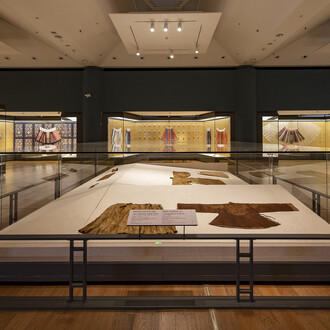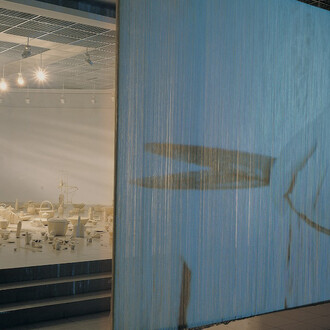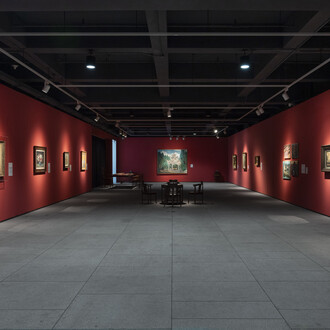A Thousand Plateau Art Space is delighted to announce the upcoming solo exhibition of artist Zhai Liang, In praise of the everyday, on view from September 27 to November 30, 2025. Curated by Fiona He, the exhibition invites viewers to step into the artist’s carefully constructed“sites where life happens” and explore his latest works on canvas. We warmly welcome your visit!
In French writer Tzvetan Todorov’s Éloge du quotidien, the everyday is endowed with a meaning that transcends the trivial. He emphasizes that the authentic experience of human existence is not conveyed in grand historical or political narratives, but is often revealed through the most insignificant fragments, reminding us that the everyday is not merely a monotonous repetition, but a latent force.
Art historically, the notion of the “everyday” has long swung between the peripheral and the center. While genre paintings and still-life from the Dutch Golden Age attribute solemnity to fragments of daily life, the modernists have turned it into a source of exploration. In the contemporary context, the quotidian becomes as much a mode of representation as a way of generating concepts. Zhai Liang’s exhibition Praise of the everyday unfolds in this context: through the medium of painting, the artist interweaves personal experience, fictional narratives, allegorical imagery, and art-historical traditions, adding new dimensions to the everyday.
In his works on canvas, Zhai Liang is not interested in constructing a complete narrative of any given events, but in capturing those fleeting gestures and glances. His close-up compositions push figures' limbs almost beyond the frame, drawing viewers into the narrative field while highlighting the act of viewing itself as an experiential process. His imagery often stems from the interweaving of memory and fiction. It is great pleasure to have friends come afar, drawing on personal experience, and employing a classical phrase to transform the “visitor from afar” into a non-human entity, thus turning personal memories into allegorical iconography. Sip away the ocean until it’s dry not only superimposes a wine bottle with a Bodhisattva's vase, but also eclipses worldly consumption and excess with religious bestowal and compassion to everyday objects, allowing symbolic meaning to collide with secularised religious imagery.
The experience of consuming alcohol runs as a key internal thread throughout the exhibition. How wonderful it would be to be intoxicated on knowledge, depicts two vomiting figures hunching over, while the title suggests their intoxication to be the outcome of knowledge. This claim resonates with Zhai Liang, who has been a voracious reader of philosophy, literature, and media theory, reflecting on how knowledge may alter the senses. If Werner Herzog’s 1982 film Fitzcarraldo foreshadowed the ideals and failures of modern enlightenment in South America, Zhai’s painting Nothing can hold back Fitzcarraldo’s love for music captures a drunken dancer wearing a suit, ties, and sunglasses, to represent the irrationality and rhythm of contemporary urban life.
Other than drawing from disciplines beyond artistic practices into the openness and complexity of art history, Zhai also reflects on Picasso’s lasting appropriation of Jean Auguste DominiqueIngres and Martin Kippenberger’s parodic strategies to locate his own practice between the modern and the contemporary. He reads art theory and literature, testing these ideas through his works on canvas. His translations of cinematic scenes and incorporation of musical rhythms prevent his work from falling into a singular category. This narrative mechanism also explains the shift in his creative direction: his early politically charged expressions gradually gave way to micro-narratives of the everyday. Yet, the grand themes have not vanished, but manifest indirectly through details and individual experiences. The works eschew direct, positional expressions, instead presenting multifaceted and complex dimensions.
In Your blue is also my blue, the female figure from the film Five Golden Flowers is placed within environments of friends and pets. She’s no longer merely a cultural icon of a specific era, but has become interwoven into personal experiences and collective memories. Animals in Zhai’s paintings are often anthropomorphized. In A brand new and good life is just around the corner!, the dog “A Tie” becomes the protagonist, through which the artist extends everyday experience into imagery by infusing personal emotions. The green rabbit in The mysterious world of Pieter Bruegel the elder, on the other hand, responds to the Netherlandish painting tradition of integrating allegory into daily life, where uncanny animal imagery extends Bruegel’s narrativelogic.
Such a seemingly dissonant pictorial arrangement is also found in The outer layer of time, where Zhai places a lamp obscuring a figure’s head, rendering it both a light source and an element that disrupts narrative logic. What is a good life? transforms a personal photograph into a self-portrait; its spiraling structure and rough lines resonate with expressionist gestures, but the focus is less on representing the self than on questioning “how to live.”
“In Praise of” in the classical tradition was often employed to extol heroes or monumental events. In this exhibition, Zhai Liang's paintings confer value upon fragments of everyday life, transforming all aspects of living into subjects worthy of celebration. Todorov’s notion of “praising what one beholds” is extended here, as the elegy becomes a stance of looking. Zhai Liang allows the most minute moments of life to be heard through painting, thereby elevating everyday experience into a visual system of universal significance.











